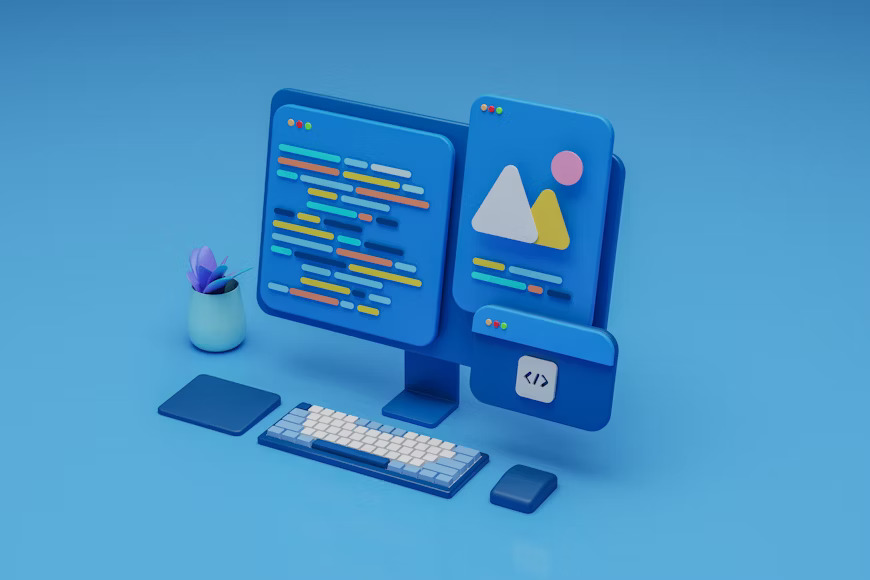In today’s business world, websites are a means of gaining customer traction and engagement. Significantly, a well-designed website can enhance the user experience, helping businesses achieve their goals optimally. Elaborating further, a good web design is important as it develops a positive impression and credibility towards the business in the minds of the customer. Furthermore, it also helps in building a strong SEO strategy for the company.
Considering its power-packed set of perks for the brands, the cost sheet becomes a prominent factor for ascertaining web design cost. So, if your brand is considering augmenting the user experience (UX) through web design, you need not worry. We present here a guide for understanding the various factors and costs that impact website design pricing in 2025.
The Factors Determining Web Design Costs
Critically, web design is an amalgamation of various concepts that bring forth an amazing digital experience. In this light, there are various factors involved in determining the website design-related costs.
Let’s explore the most common factors that affect your brand’s web design costing sheet.
1. Website Size and Structure
This is among the most significant considerations for web design services pricing for the brands. Moreover, website complexity can be understood in the context of the number of pages and the content management system for a given website.
- For instance, the larger the website in terms of the number of landing pages, the higher the cost associated with web development prices for the brand.
In terms of complexity, there are various elements that the brands can consider for costing analysis. These features include:
- The complexity of navigation
- Visual elements of the web page
- Color schemes
- Layout
- Page loading time and
- Font style
2. Website Type
This aspect considers the websites based on their design and customization. Based on their purpose, the most common types of websites include business websites, e-commerce websites, portfolios, and various social media platforms.
For instance, an e-commerce website design has multiple functionalities like UI/UX design, a content management system, and various integrations & APIs. These facilitate the customers’ transition smoothly through the webpages. Thus, brands may have an increased web design cost, when leveraging these functionailtiies.
For specific details, let’s look at the table marking the pricing range for the different types of websites.
| Website Structure and Types | Estimated Cost Range |
| Single Landing Page | $1,500-$3,000 |
| Small Business Model | $3,000-$8,500 |
| Corporate Website | $8,500-$15,000 |
| E-commerce Website | $15,000-$30,000+ |
| Enterprise Website | $30,000-$1,00,000+ |
3. Engagement Models:
Engagement models impact the pricing levels significantly in the context of web development services. Looking at some of the models, we understand that,
- Freelance designers offer a flexible pricing strategy, but they generally provide a limited skill set. This is because their teams, if any, are smaller and generally have less expertise compared to the other models.
- In-house teams are the most expensive in terms of price range, yet they offer a full panel of services in web design. The costing is also higher due to added infrastructure, software licenses, salaries, and training costs.
- Outsourcing balances the skillsets by having a team of experts & is comparatively less costly than hiring in-house teams.
Let’s review the specific price ranges of these models in this reference.
| Engagement Model | Estimated Cost Range |
| Freelance designer | $2,500-$8,000 |
| Outsourcing Agency | $8,000-$30,000 |
| In-house Team | $70,000-$1,50,000 (salaries+overheads) |
4. UI/UX Design:
There are user experience web designs that may be based on a template or can be custom-made. Template models are usually less costly than custom ones, which are fine-tuned to meet the goals of enterprises.
These have specific web development price ranges as well, which are listed below:
| Design Type | Estimated Cost Range |
| Basic UI/UX Design | $600-$2,500 |
| Semi-Custom Design | $2,500-$6,000 |
| Fully-Custom Design | $6,000-$15,000 |
| AI-Enhanced Design | $10,000-$20,000 |
5. Customization Requirements:
Personalization is an artistic feature that adds to the price range. There are many elements, including site layout, sitemap, and visual elements, which are components of the creative web design work.
Hence, the more the personalization, the higher the cost of the services, as it will require more creative efforts.
6. Locations
Various locations have higher web development service price ranges in web design as per the market forces of demand and supply. To understand this better, let’s have a look at the hourly structure of the pricing ranges as per the various locations.
Hourly Cost Structure as per Locations:
| Region | Hourly Rate |
| North America | $75-$150 |
| Western Europe | $60-$120 |
| Eastern Europe | $35-$70 |
| Asia | $20-$50 |
| Australia & New Zealand | $70-$130 |
| Middle East | $50-$100 |
| Latin America | $30-$60 |
Additional Pricing Averages:
- For a single domain name, the average cost comes to $10-$30 per year.
- Web hosting services are of various types, and their higher average cost is up to $500 per month.
- For additional plug-ins, there are some that are free of cost, while the higher range may be up to $100 per year. These also include an SSL certificate, which may round up to the higher range of $1000+.
- Images and graphics cost around $60-$7000 per project
- E-commerce functionality is an additional $0-$7500 per project requirement
Conclusion
Conclusively, the web design costing ascertained as per the project has an average range of $1000 to $50,000. Ultimately, this price guide aims to help you choose the best approach for your brand. As a recommendation from our end, do your research vigilantly and invest in the transformation web design services accordingly.
